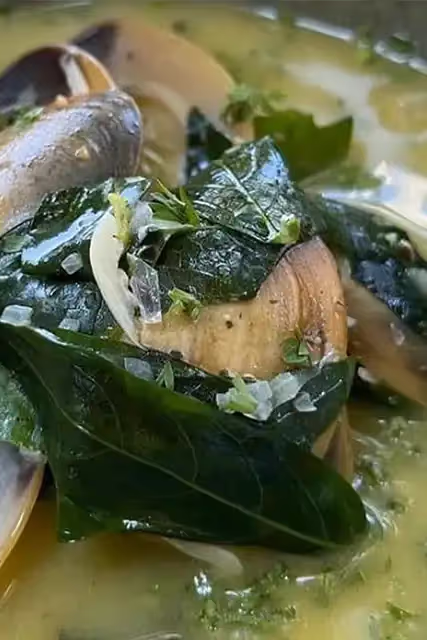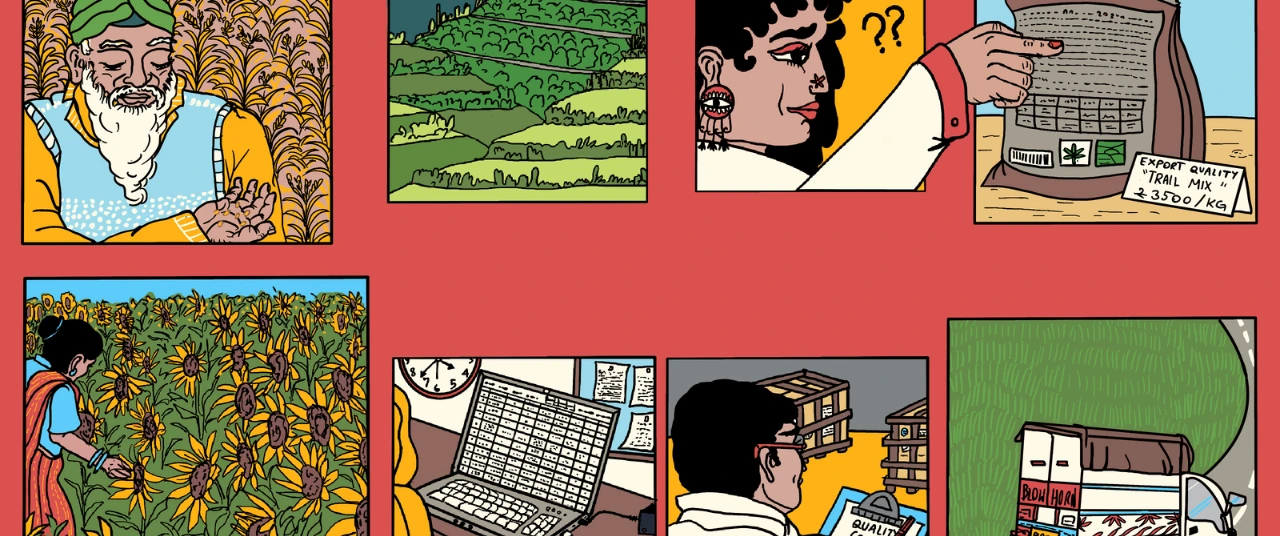Meet the superfood that's been right under our noses all along






"Try the fish. It's cooked in a multivitamin leaves gravy," urges Jaywant Chowgule, the owner of Mangaal Farmstay, as he nudges me towards a special item on the day’s lunch menu. We were there celebrating a friend’s birthday, enjoying a wholesome, delicious set lunch, when Jaywant mentioned the leaves—something I'd never heard of before. My curiosity piqued, I eagerly served myself a generous helping of the forest green dish.
A closer look
After lunch, we walked over to a short tree where Jaywant reached up and plucked a few leaves. The leaves spread symmetrically from a central stalk, with the largest, around 4 cm in length, at the base, and smaller ones, about 1.5 cm long, higher up the stem. They resembled the Star Gooseberry plant, which I mistakenly assumed they were. But Renuka Vijairaghavan, a 66-year-old sustainable lifestyle coach from Pune, corrected me.
"Multivitamin leaves plant is Sauropus Androgynus and Star Gooseberry plant is Phyllanthus Acidus. They look similar, but they're entirely different. Even some scientists make this mistake in their reports," she explained. Renuka grows the plant herself and regularly includes the leaves in her diet, sometimes eating them raw after pruning to get those extra nutrients.

The versatile sweetleaf
Sauropus Androgynus, known as sweetleaf or Multivitamin leaves, among other names, is usually found in Southeast Asia—particularly in India, Bangladesh, and the Guangxi, Guangdong, Hainan, and Yunnan provinces of China. This easy-to-grow plant thrives in warm, tropical climates and can reach up to 6 metres if left unattended. Widely known as Katuk or Cekur Manis in South East Asia, the sweet leaf is known to have a nutty flavour profile with a taste between peas and asparagus. In India, it’s also called Chakramuni or Thavasi Keerai.
Nutritional powerhouse
One of the most striking aspects of sweetleaf is its protein content, comparable to that of soybeans, making it especially appealing to vegetarians and vegans. It’s also rich in antioxidants, provitamin A, carotenoids, and vitamins B, C, and D. In fact, it has more phosphorus than a banana and is loaded with calcium. Dr. Hock Eng Khoo’s research highlights the plant's abundance of both macro and micronutrients, nearly all our bodies need.
Medicinal uses
Sweetleaf has long been used in folk (unani) medicine for treating coughs, wounds, urinary disorders, and fevers, thanks to its anti-inflammatory and antibacterial properties. Dr Maryanne Lobo, an Ayurveda physician and agroforestry consultant, says, "Though not widely mentioned in Ayurvedic texts, these leaves are known to lower cholesterol, strengthen bones, alleviate cancer symptoms, and cure infections." In Indonesia, the leaves were traditionally used to increase breast milk supply. Their high lutein content benefits eyesight and digestive health.
Though not widely mentioned in Ayurvedic texts, these leaves are known to lower cholesterol, strengthen bones, alleviate cancer symptoms, and cure infections.
In Tamil Nadu, Thavasi Keerai (another name for sweet leaf) is used for its detoxification properties. Its flavonoids and carotenoids boost the plant’s ability to act as an anti-carcinogen, anti-diabetic, anti-inflammatory, and antioxidant. It’s also an excellent wound healer, featured in various gels and creams. Folklore even claims it can reduce snoring and teeth grinding—a remedy many wives might be eager to try on their husbands!
Given its robust nutritional profile, it’s surprising that sweetleaf isn’t a culinary star. This herb has been used for decades in traditional recipes across China, India, and Thailand. Shruti Tharayil, a forager who educates others about wild greens through her Instagram, Forgotten Greens, regularly picks and eats these leaves. In Goa, Tanya, the owner of Edricia Farms, grows and sells them. Most of her customers, including chefs, eat them raw in salads or lightly stir-fried.

A south Indian staple
In South India, Sweetleaf is commonly used in Thambli, a chutney made by grinding the leaves with curry leaves, mustard seeds, cumin, lentils, and grated coconut. Many South Indians also fry the leaves until crispy, enjoying them as a side with rice and dal. The younger leaves can be eaten raw, added to salads, or blended into smoothies for a nutritional boost. The mild, slightly sweet flavour pairs well with a variety of ingredients.
Chef Sandeep Sreedharan was "adventurous enough" to combine multivitamin leaves with clams. He says, "We used to call it Madura Cheera in my hometown in Kerala - it means sweet leaf. The most common preparation we had was with half-cooked lentils. I grew up eating this."
But he cautions against eating it everyday, saying, "It is a very strong leaf. And once the plant fruits, the taste of the leaves changes and they are not very nice."
While the leaves offer numerous benefits, overconsumption can lead to health issues. The compound papaverine, which helps relieve constricted blood flow, can cause lung damage if consumed in excess, leading to a condition known as bronchiolitis obliterans.
My culinary experiment
I found a consistent supply of these leaves through a friend’s garden. Although they don’t cook with them, they’re happy to share. I’ve sneaked these leaves into various recipes. My north Indian roots led me to attempt a version of palak ka saag with these leaves. With a dollop of fresh cream, it tasted divine—knowing it was more nutritious than the traditional spinach or mustard leaf version made it even better. Yet, given the potential side effects, I resist the temptation to cook it too often.
With its ease of growth, medicinal properties, versatile flavour, and impressive nutrient profile, it’s puzzling that Sweetleaf hasn’t gained more culinary recognition. Perhaps it’s time for this humble leaf to step into the spotlight.
References











